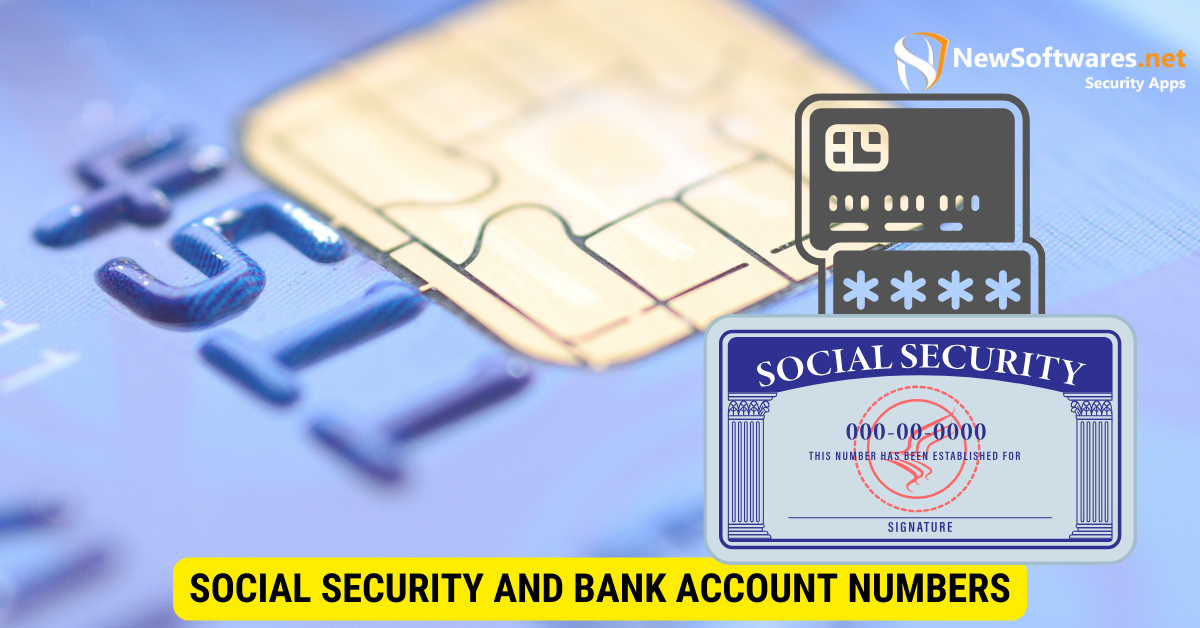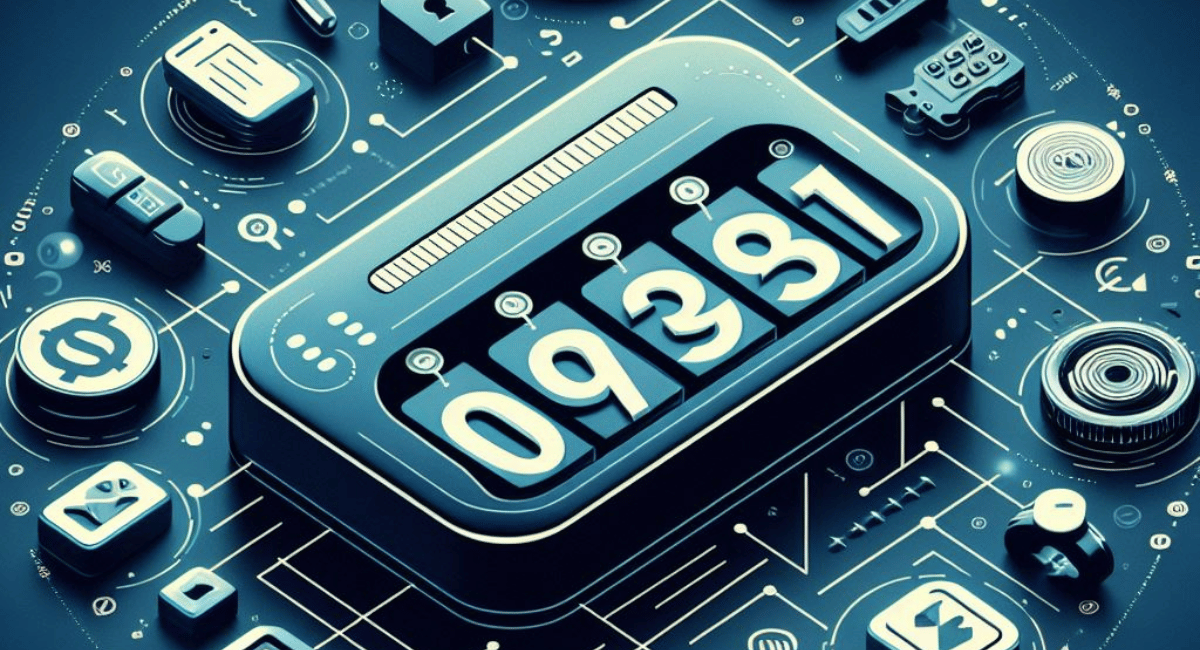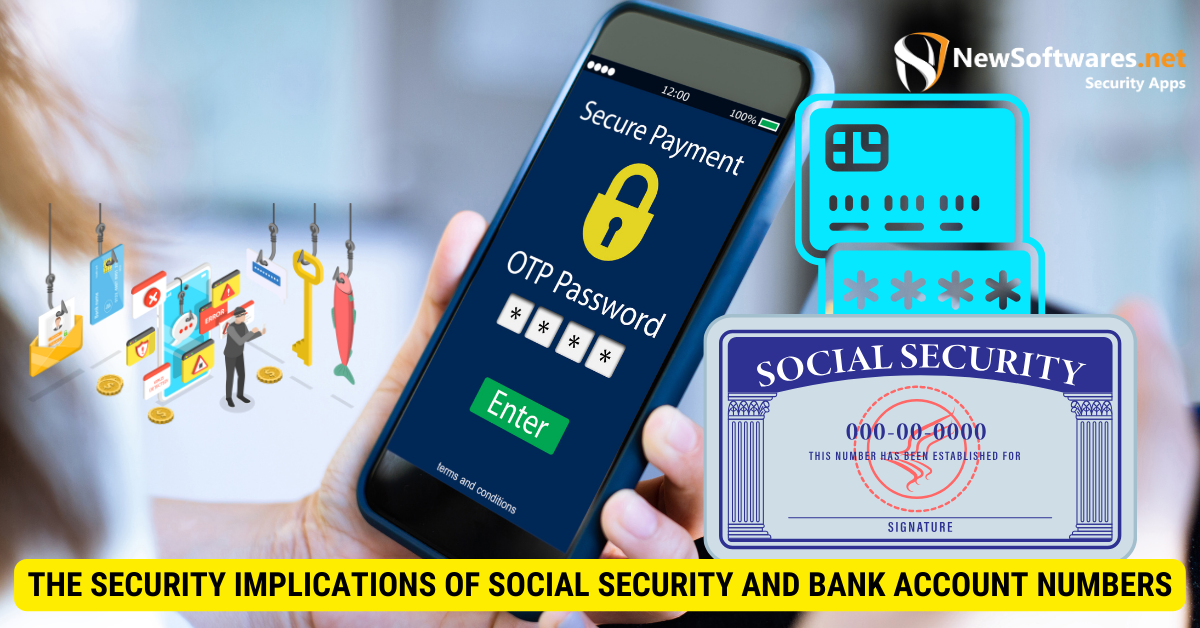Social Security and bank account numbers are classified as personal and sensitive financial data. They are critical identifiers used in various financial, employment, and governmental transactions and, if compromised, can lead to identity theft and financial fraud.
In today’s digital age, understanding the type of personal data we share and protect is more important than ever. Social security and bank account numbers are critical information requiring utmost care. Let’s dive into the basics of these numbers and explore their significance, structure, security implications, and how to safeguard them effectively.
Understanding the Basics: Social Security and Bank Account Numbers

What is a Social Security Number?
A social security number (SSN) is a unique numerical identifier issued to U.S. citizens, permanent residents, and temporary working residents. It serves as a record with the Social Security Administration, facilitating benefits, taxation, and social security-related programs.
Your SSN consists of nine digits, typically divided into three sets separated by hyphens. The first three digits represent the area where your SSN was assigned, while the middle two digits indicate the grouping sequence. The final four digits serve as a serial number.
When it comes to the history of social security numbers, it is interesting to note that they were first introduced in 1936 as part of the Social Security Act signed by President Franklin D. Roosevelt. Initially, the primary purpose of SSNs was to track individuals’ earnings and contributions to the Social Security program. However, over time, their use expanded to include various other purposes, such as identification for tax purposes and eligibility for government benefits.
Additionally, it is worth mentioning that the first three digits of an SSN, known as the “area number,” are not assigned randomly. They are given based on the zip cryptograph of the mailing address provided on the application for an SSN. This allocation system helps ensure that SSNs are geographically distributed.
What is a Bank Account Number?

A bank account number is a series of digits used to identify your specific account within a financial institution. It allows for the secure transfer of funds, receiving deposits, and facilitating electronic payments.
Bank account numbers vary in length, typically consisting of a combination of digits, which may include account type codes. These numbers are unique to each account holder and are not disclosed freely to maintain financial privacy.
When it comes to the security of bank account numbers, financial institutions employ various measures to protect them. One common practice is using encryption techniques to safeguard sensitive information during online transactions. Additionally, banks often implement multi-factor authentication systems, such as requiring a combination of passwords, PINs, and security questions, to ensure only authorized individuals can access the account.
It is interesting to note that the format of bank account numbers can vary across different countries and financial institutions. For example, in some countries, bank account numbers may include letters and digits, while in others, they may consist solely of digits. These variations reflect the unique systems and regulations in place within each jurisdiction.
Furthermore, bank account numbers are crucial in enabling seamless financial transactions. When you provide your bank account number to an employer, for instance, it allows for direct deposit of your salary, eliminating the need for physical checks. Similarly, when you make online purchases, you can securely provide your bank account number to complete the transaction without needing cash or credit cards.
In conclusion, social security and bank account numbers are essential to our modern financial systems. Understanding their purpose, structure, and security measures can help individuals confidently navigate financial transactions and protect their personal information.
The Importance of These Numbers
Certain numbers play a fundamental role when navigating the complex world of personal finance and ensuring the security of our financial transactions. These numbers, such as social security and bank account numbers, are more than just digits on paper. They hold the key to accessing government benefits, planning for retirement, and conducting various financial activities.
The Role of Social Security Numbers
Social security numbers, often SSNs, are the backbone of many important life processes. They are primary identifiers for credit checks, employment verification, and tax-related purposes. Without a valid SSN, individuals may face difficulty obtaining loans, securing employment, or even filing their taxes accurately.
However, the significance of SSNs goes beyond mere administrative purposes. These nine-digit numbers can unlock a world of possibilities and opportunities. With a valid SSN, individuals can access government profits, such as social security retirement or disability payments. These benefits provide a safety net for individuals and families during financial hardship or retirement.
Yet, just as SSNs hold the potential for positive impact, they also pose a significant risk when falling into the wrong hands. Identity thieves and cybercriminals see SSNs as valuable commodities that can be exploited for personal gain. Unauthorized individuals who gain access to your SSN can open credit accounts in your name, file fraudulent tax returns, and cause significant financial and personal distress.
Therefore, it is of utmost importance to guard your SSN carefully. Treat it as a precious asset that requires diligent protection. Safeguarding your SSN involves taking measures such as possessing your social security card in a secure location, refraining from sharing it unnecessarily, and being cautious when providing it online or over the phone.
The Role of Bank Account Numbers
Bank account numbers, on the other hand, are the lifeline of our finances. These numbers enable us to manage our money effectively, conduct financial transactions electronically, and pave the way for a seamless financial experience.
With a bank account number, individuals can transfer funds effortlessly, receive direct deposits of salaries, and process payments with ease. These numbers serve as a gateway to financial independence and stability, allowing us to pay bills, save for the future, and meet our day-to-day financial obligations.
However, just like SSNs, bank account numbers are highly sought after by cybercriminals who seek to exploit them for their gain. Unauthorized access to your bank account numbers can lead to unauthorized withdrawals, identity theft, and other forms of financial fraud.
To safeguard your bank account numbers, it is crucial to exercise caution and implement security measures. This includes regularly monitoring your bank statements for any suspicious activity, using strong and unique passwords for online banking, and refraining from sharing your account details with anyone unless necessary.
By understanding the importance of these numbers and taking practical steps to protect them, you can ensure the security of your finances and minimize the risk of falling victim to monetary fraud or identity theft.
The Structure of Social Security and Bank Account Numbers
Breaking Down the Social Security Number
Understanding the structure of a social security number can help you recognize potential anomalies and keep your SSN secure. The specific arrangement of digits provides information about when and where the number was assigned.
Did you know that the first three digits of a social security number represent the area number? This area number is assigned based on the geographical region where the person was born. It helps identify which Social Security Administration office issued the number. For example, if the first three digits are between 001 and 003, the number was assigned in New Hampshire.
The subsequent two digits of a social security number indicate the group number. This group number is used to divide individuals within a specific area further. It helps distinguish between people assigned their social security numbers around the same time and place. So, if two people have the same area number but different group numbers, they were assigned their numbers at different times or by different offices within the same area.
Lastly, the last four digits of a social security number are known as the serial number. This serial number completes your unique identity within the given area and group. It is essentially a sequential number assigned to individuals in a specific order. However, it’s important to note that the serial number does not necessarily reflect the order in which social security numbers were issued. It mainly differentiates individuals who share the same area and group numbers.
Understanding the Bank Account Number
Bank account numbers comprise a combination of digits that may differ in length depending on the financial institution and account type. Some banks include specific codes within the account numbers to distinguish between various services or branches.
Have you ever wondered how banks come up with your account number? Well, each financial institution has its system for generating account numbers. Some banks use a simple sequential numbering system, assigning each new account the next available number. Others may incorporate specific codes or patterns within the account numbers to identify different types of accounts or branches.
For example, a bank may use a specific range of numbers to represent checking accounts and another range for savings accounts. This helps the bank and its customers easily identify the type of account associated with a particular number. Additionally, some banks may include branch codes within the account numbers to indicate the branch where the account was opened.
When initiating transactions, properly reviewing your bank account number details is vital. This ensures accuracy and helps prevent mishaps such as failed transfers or incorrect deposit allocation. Double-checking your account number before providing it to others or inputting it into online banking systems can save you from headaches and financial inconveniences.
The Security Implications of These Numbers

Risks Associated with Social Security Numbers
Due to the wealth of personal information associated with social security numbers, their compromise can have severe consequences. Identity theft, loan fraud, and unauthorized account access are some risks individuals face when SSNs fall into the wrong hands.
It is crucial to remain cautious when sharing your SSN and provide it only to trusted entities. Always verify how your SSN will be used and stored to minimize exposure risk.
Risks Associated with Bank Account Numbers
Bank account numbers can be exploited by criminals to gain unauthorized access to funds. Through phishing, malware, or data breaches, fraudsters can attempt to use account numbers to initiate fraudulent transactions or drain funds.
Regularly monitoring your bank account activity, implementing strong security measures like two-factor authentication, and promptly reporting suspicious transactions are essential steps to mitigate the risks associated with your account numbers.
Protecting Your Data
Best Practices for Protecting Your Social Security Number
To safeguard your social security number, follow these best practices:
- Keep your physical SSN card in a secure place.
- Avoid carrying your SSN card in your wallet or purse.
- Be cautious of sharing your SSN when unnecessary.
- Do not provide your SSN over the phone or via email unless you initiated the interaction and trust the recipient.
- Frequently monitor your credit report and financial accounts for any suspicious activity.
Safeguarding Your Bank Account Information
Consider the following measures to protect your bank account numbers:
- Choose strong, unique passwords for your online banking accounts.
- Use reputable and secure banking apps or websites for financial transactions.
- Avoid clicking on suspicious links or sharing sensitive information through unencrypted channels.
- Regularly review your bank statements and report any unauthorized transactions promptly.
- Consider using account alerts or monitoring services for added security.
Adopting these practices can significantly reduce the risk of compromised social security and bank account numbers.
Key Takeaways
- Both are unique identifiers for individuals.
- They are often targets for identity theft and fraud.
- Safeguarding them is essential to prevent unauthorized access and misuse.
- It’s important not to share them recklessly.
- Regular monitoring statements can help in the early detection of unauthorized activities.
FAQs
Q: Why are these numbers considered sensitive?
A: Because they can access personal financial data and are tied to an individual’s identity.
Q: How can I protect these numbers?
A: Store them securely, avoid sharing them unnecessarily, and be wary of phishing attempts.
Q: What should I do if I suspect my numbers are compromised?
A: Report it to the respective institutions (bank or SSA) and monitor for suspicious activities.
Q: Can I change these numbers if they’re compromised?
A: While bank account numbers can be changed, changing a Social Security number is more complicated and is done under specific circumstances.
Q: How often should I check for unauthorized activities related to these numbers?
A: Regularly, at least monthly, or whenever you receive a statement/notification.
Conclusion
Social security and bank account numbers are critical pieces of personal data that require diligent protection. Understanding their basics, structure, and potential risks empowers individuals to implement strong security measures and maintain financial privacy in an increasingly interconnected world.
